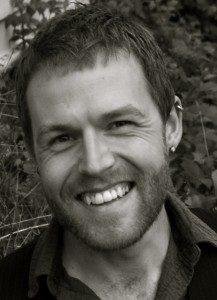At the Edge of Two Fields | By Matthew Nienow

I’m trying to make it as a boat builder in a town full of boat builders. All around me are folks who can do what I can do, and who probably have more experience. But boats aren’t just a job for me. When I step up to a hauled-out 80-ft. schooner, I take in her lines, her tuck, the rake of her transom; I gather the details and have a sense of how she’ll handle in the water. When I climb the scaffolding to tear off a plank, or prod with an awl to see how deep rot runs, I become a part of the whole history of boats, of their myths and legends. Whether I want it or not, I am tied to the lineage of other shipwrights, from Noah to the Norse.
Of course, it is the same with poetry. The work is as challenging and complex, if less physical, my pen dipped in the same ink as Levis, Whitman, Keats, and Coleridge. I could find easier work, and I could surely find a way to make more money, but I am convinced that these challenges only further the value of what is made. No one but my wife pushes me to continue seeking out boat jobs in the cold and dusty yard, or to wake extra early before my son is up so that I can work and re-work a single sentence to its perfect shape and sound.
And yet, the work is good. What seems more important to me, at least as it plays out in my daily life, is how these two vocations feed each other. At my desk, I grope at the air trying to find the exact word for a certain texture; on the deck of a boat, sledge and pry bar in hand, texture is all I have—and for the work to be truly satisfying, I must engage in the story of what is being made.
*
NER Digital is a creative writing series for the web. Matthew Nienow’s most recent chapbook is The End of the Folded Map (Codhill Press, 2011). His poems have appeared or are forthcoming in NER (31.4, 33.1), Poetry, and Southwest Review, and have been recognized with fellowships from Artist Trust of Washington State and the National Endowment for the Arts. He lives in Port Townsend, Washington, with his wife and two sons.